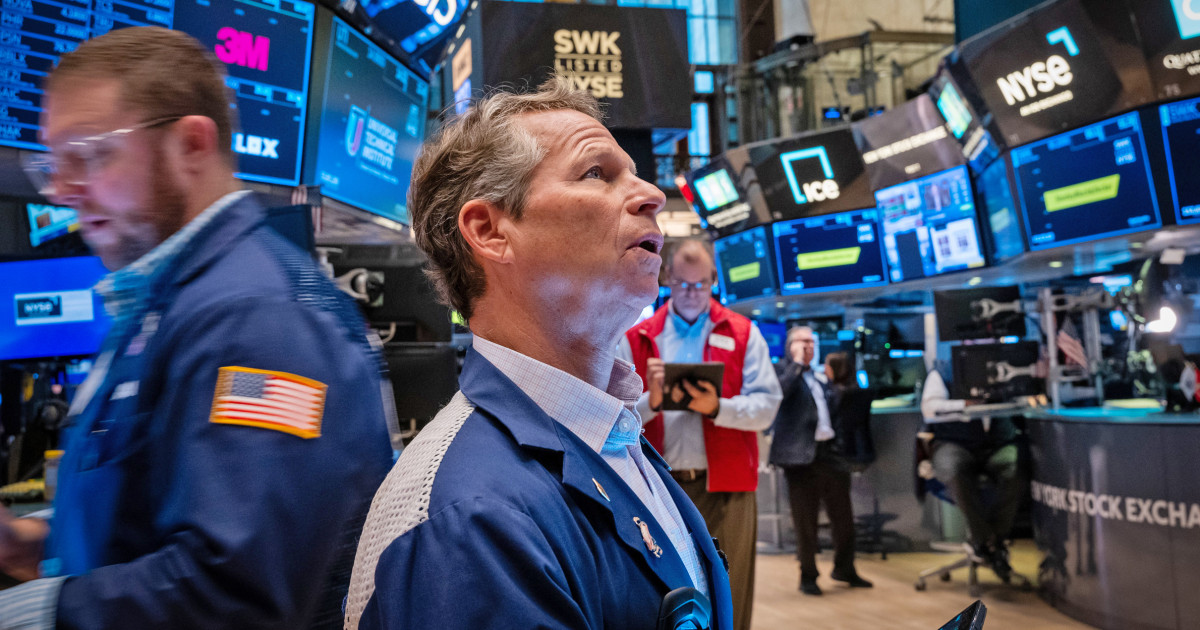The Dow Jones Industrial Average stock index hit 40,000 for the first time Thursday amid renewed investor hopes for a “soft landing” for the U.S. economy following a favorable inflation report.
The index, which is comprised of the stocks of 30 major companies such as Apple and McDonald’s, has gained a modest 6% on the year. The other major U.S. stock indices, the S&P 500 and the Nasdaq, also hit record highs and have outpaced the Dow with their year-to-date gains.
The Biden-Harris campaign released a statement calling the milestone “just another example of how President Biden is strengthening our economy and helping to secure the retirement of millions of Americans across the country.”
Wednesday, the Bureau of Labor Statistics reported the Consumer Price Index climbed 3.4% for April — below analysts’ expectations and with a clear trend toward further deceleration, or slowing price growth.
“The news on Core inflation [excluding food and energy prices] was better than expected,” Gary Pzegeo, head of fixed income at CIBC Private Wealth US, said in a statement. “Core goods [like cars] continue to be in outright deflation, housing inflation decelerated, and other services improved on a month-to-month basis. Retail sales also showed some deceleration from the previously hot consumer sector. “
Investors tend to favor deceleration because it means prices are still moving up — but at a more sustainable rate. This also has implications for interest rates — the cost of borrowing money for everything from credit cards to auto loans and, indirectly, for mortgage rates.
Markets had a rough spring, as three consecutive reports showed the inflation rate picking up speed — from 3.1% in January to 3.5% in March. The Dow Jones Industrial Average fell about 5% between the end of March and the beginning of April as economists and investors fretted over whether or not progress on inflation had stalled.
The April report, which reflected the first slowdown in inflation since the beginning of the year, appears to have alleviated some of those concerns.
“Following three months of inflation upsets, the April report put a soft landing and 2024 rate cut back in investors’ sights,” Julia Pollak, ZipRecruiter’s chief economist, said in a statement.
The Federal Reserve continues to target an inflation rate of 2%. If the central bank believes price growth is slowing toward that figure, it may consider cutting its key interest rate from the nearly 5.5% level it’s been at for about a year.
If interest rates move down, it would help lower monthly payments faced by businesses and consumers alike throughout the economy.
Of course, the stock market is also tied to company earnings — and right now, publicly traded firms are reporting robust profits. In the first quarter of the year, about three-quarters of all firms beat their earnings estimates, a higher rate than the historical average.
Early Thursday, Walmart joined their ranks when it reported earnings above analysts’ expectations.
“A bad economy? Publicly traded American companies aren’t seeing it, as corporate earnings expectations move steadily higher,” Bankrate analyst James Royal said in a statement. “Strong current earnings and increased earnings expectations are pushing the S&P 500 to new all-time highs.”
A stronger stock market should also provide a windfall to the many Americans watching their 401(k) balances. A Bank of America Institute report on retirement savings showed the average account balance increasing from $78,883 in March of last year to $92,142 in March of this year, a nearly 17% jump.
But for many consumers, especially lower incomes ones, the U.S. economy still does not feel great. The latest University of Michigan consumer sentiment survey has fallen to its lowest level in six months. The New York Federal Reserve’s latest survey of consumer expectations showed Americans expecting inflation to actually worsen in the short term, though the report came about before this week’s inflation report.
The report also showed workers are feeling less certain about the labor market, with the mean perceived probability of finding a job if one’s current job was lost declining to its lowest reading since April 2021.
But in the aggregate, the majority of data points show a U.S. economy that is humming along.
“The still healthy consumer, strong labor market, potentially lower rates helping housing, and improving manufacturing all suggest an economy that could surprise to the upside the rest of ‘24,” Ryan Detrick, chief market strategist at Carson Group, wrote in a note earlier this month.















